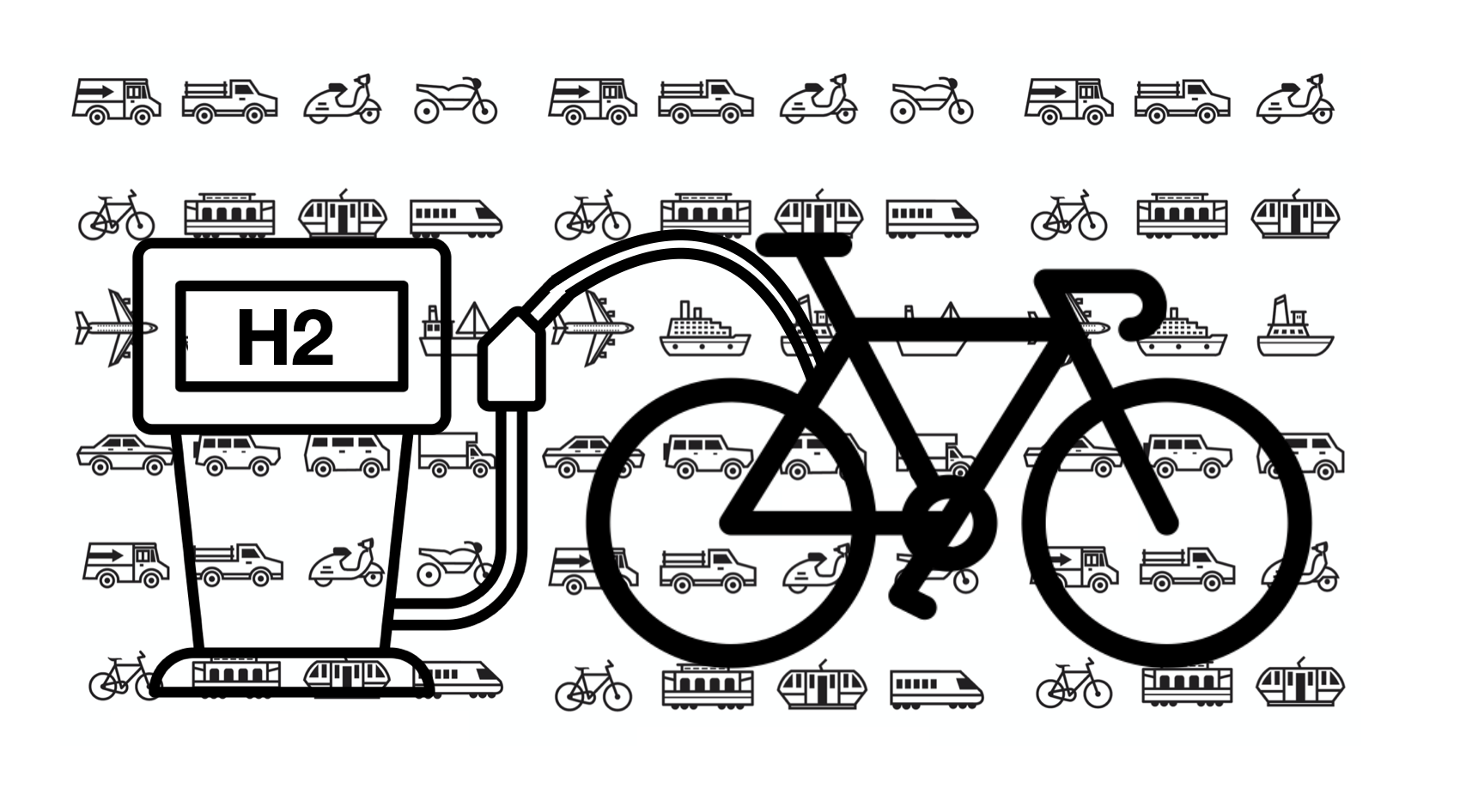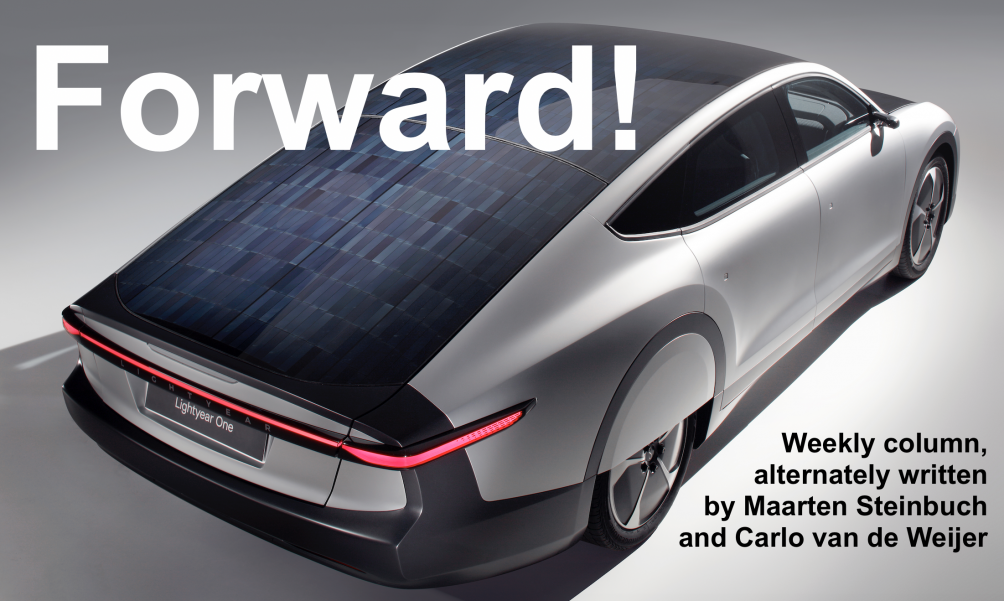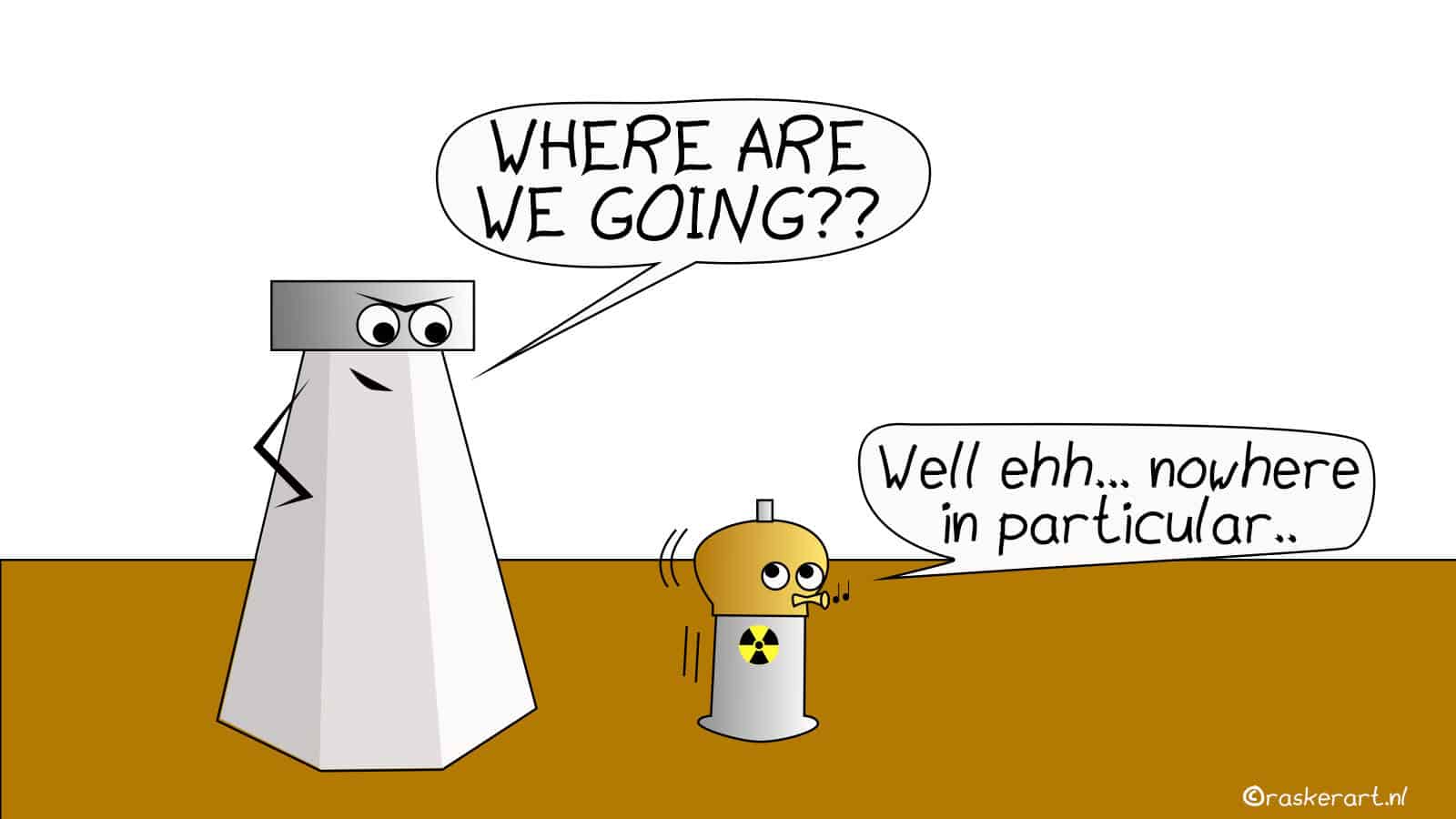
A happy message from Groningen: a trial is starting with electric bicycles powered by hydrogen. The hydrogen bike is expensive, almost €10,000, but for now, you can get a discount of €2500.
On Twitter, this message led to a creative discussion and a long list of possible applications. A hydrogen lawnmower would be handy though, without a cord. My wife joined in with her wish for a hydrogen ladyshave. Despite the humorous reception of the news from Groningen, there is a serious question hidden underneath: what can we learn from a hydrogen bike; does it make sense or is it just a lobbying project?

Attention to such projects makes us all realize that there is a serious climate problem, as the recent IPCC report again makes clear. And that we, therefore, have to change and find solutions for everything that threatens the climate: the heating of our homes, our mobility, and the large energy demand of the industry.
Is a hydrogen bike a good solution? Unfortunately, the answer is negative. Professor Ronnie Belmans, from the Catholic University of Leuven, called it a clear case of the hammer and the nail. After all, we have a solution, namely hydrogen (the hammer), and now we are looking for a problem to go with it (the nail). Truly socially relevant questioning works the other way around: for which problems can we use which methods and solutions? Given a nail, which hammer is best?
The founder of the research bureau BloombergNEF Michael Liebreich has made a nice overview of this: energy labels from A to G for the use of (green) hydrogen. At the top is the use of hydrogen for essential production processes in the petrochemical industry, for energy management in the steel industry, and for fertilizer plants. This is followed, among other things, by the use of hydrogen as an intermediate for making artificial fuels for long-distance shipping and aviation. There are effectively no alternatives available for these types of categories. Almost at the bottom is domestic heating and right at the end comes automobility and also two-wheeled vehicles, such as the hydrogen bike. There are good alternatives available for these categories, with the help of battery storage.

The major disadvantage of hydrogen is that it takes three times as much electrical energy to power a car or bike with hydrogen as it does directly with a battery. And because it takes so much electrical energy to make green hydrogen and we still have far too little solar and wind energy, other energy users are then reliant on CO2-intensive energy carriers. Thus, using hydrogen for non-necessary applications leads to higher CO2 emissions in other applications and that is bad for the environment.
Maarten Steinbuch and Carlo van de Weijer are alternately writing this weekly column, originally published (in Dutch) in FD. Did you like it? There’s more to enjoy: a book with a selection of these columns has just been published by 24U and distributed by Lecturis.







